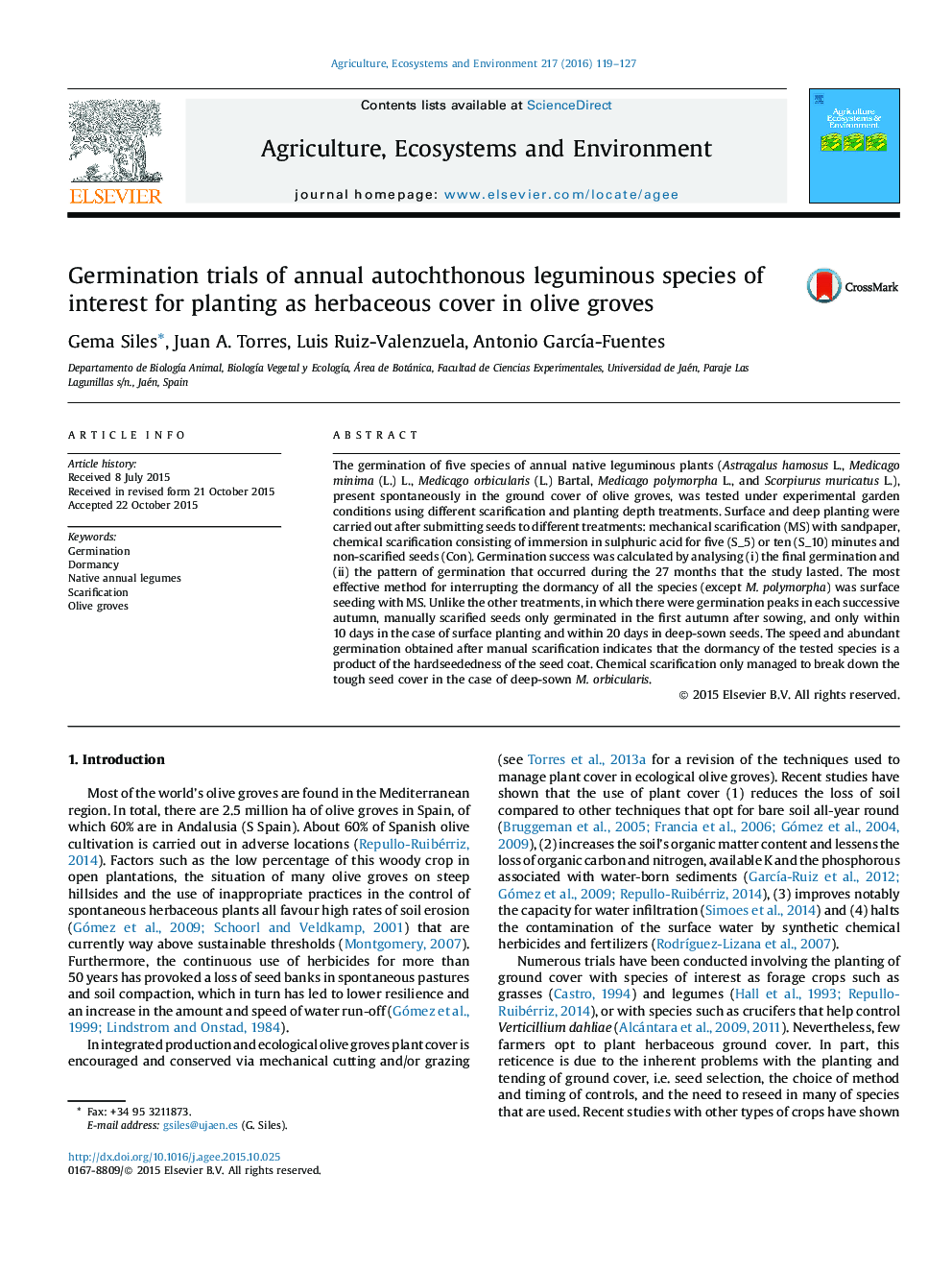| کد مقاله | کد نشریه | سال انتشار | مقاله انگلیسی | نسخه تمام متن |
|---|---|---|---|---|
| 2413677 | 1552035 | 2016 | 9 صفحه PDF | دانلود رایگان |
• The dormancy of leguminous seeds is due to the hard seededness of the seed coat.
• The best time for sowing is at the end of summer/beginning of autumn.
• The surface planting of mechanically scarified seeds improves germination rates.
• Mechanical scarification decreases the time a plant requires to germinate.
The germination of five species of annual native leguminous plants (Astragalus hamosus L., Medicago minima (L.) L., Medicago orbicularis (L.) Bartal, Medicago polymorpha L., and Scorpiurus muricatus L.), present spontaneously in the ground cover of olive groves, was tested under experimental garden conditions using different scarification and planting depth treatments. Surface and deep planting were carried out after submitting seeds to different treatments: mechanical scarification (MS) with sandpaper, chemical scarification consisting of immersion in sulphuric acid for five (S_5) or ten (S_10) minutes and non-scarified seeds (Con). Germination success was calculated by analysing (i) the final germination and (ii) the pattern of germination that occurred during the 27 months that the study lasted. The most effective method for interrupting the dormancy of all the species (except M. polymorpha) was surface seeding with MS. Unlike the other treatments, in which there were germination peaks in each successive autumn, manually scarified seeds only germinated in the first autumn after sowing, and only within 10 days in the case of surface planting and within 20 days in deep-sown seeds. The speed and abundant germination obtained after manual scarification indicates that the dormancy of the tested species is a product of the hardseededness of the seed coat. Chemical scarification only managed to break down the tough seed cover in the case of deep-sown M. orbicularis.
Journal: Agriculture, Ecosystems & Environment - Volume 217, 1 February 2016, Pages 119–127
